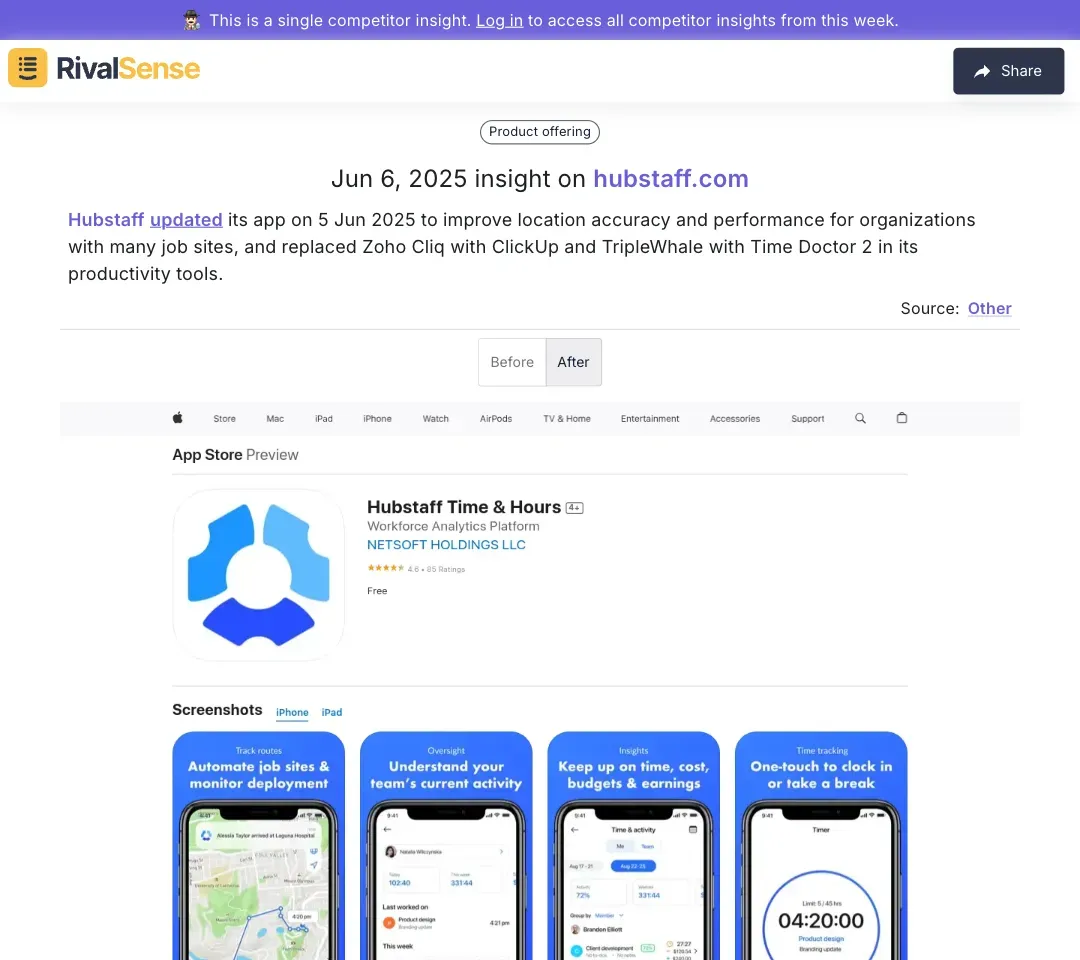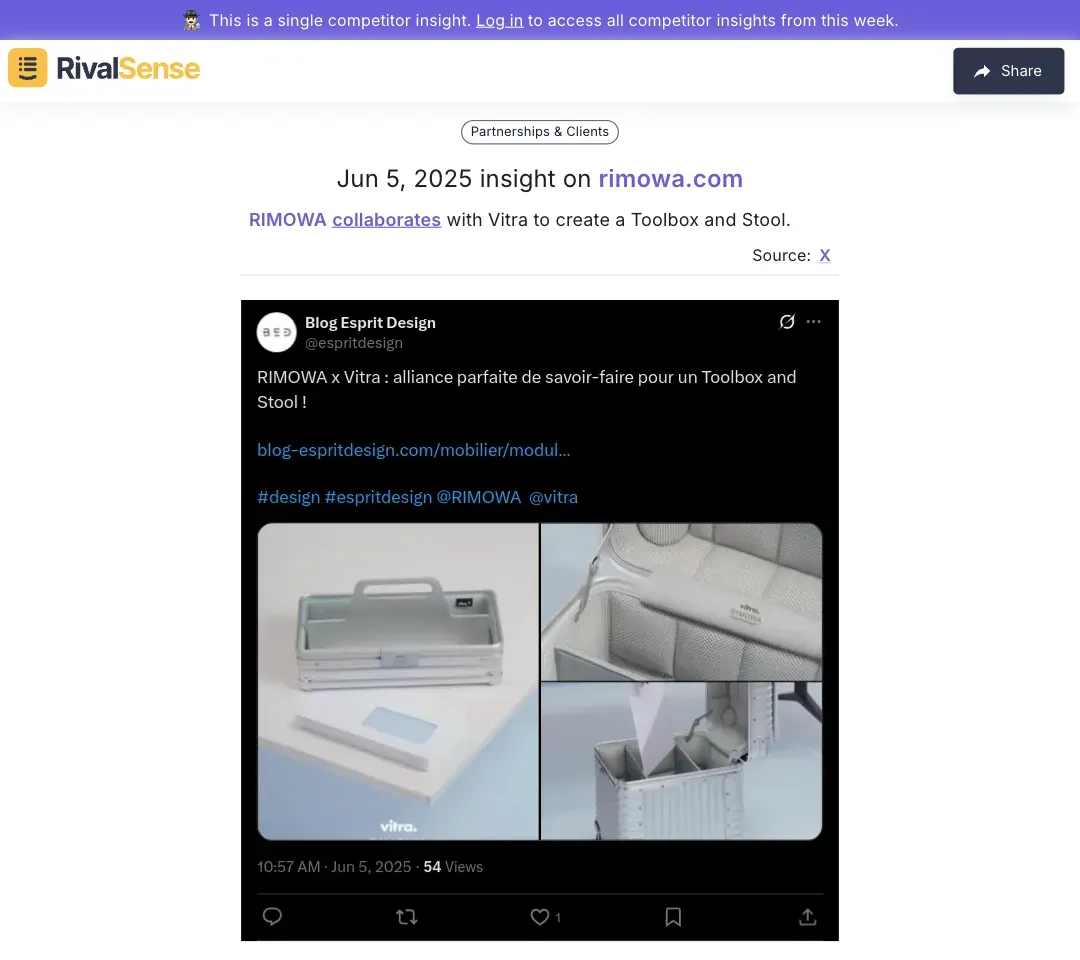Mastering Competitor Data Strategy Analysis: A Practical Guide for Business Leaders
In today's fast-paced business environment, understanding your competitors is not just an advantage—it's a necessity. A well-executed competitor data strategy analysis can uncover invaluable insights, helping you refine your business strategy, identify market gaps, and position your brand effectively. Here's how to conduct a comprehensive competitor analysis, with practical steps and tips to get you started.
What Is Competitor Data Strategy Analysis?
Competitor data strategy analysis involves systematically gathering and analyzing information about your competitors' business strategies, including their products, marketing efforts, sales processes, and customer feedback. This approach transforms raw data into actionable intelligence that drives decision-making. It helps you to:
- Learn from competitors' successes and failures to accelerate your own growth.
- Identify untapped opportunities in the market.
- Refine your brand positioning to better appeal to your target audience.
Step-by-Step Guide to Competitor Data Strategy Analysis
1. Identify Your Competitors
Start by identifying both direct and indirect competitors. Direct competitors offer similar products or services to the same audience, while indirect competitors solve the same problem through alternative solutions. Tools like RivalSense automate this process by tracking competitor activities across 80+ sources, delivering curated insights in weekly email reports.
Tip: Focus on 3-5 key competitors initially to avoid overwhelm.
2. Analyze Competitors' Products and Services
Benchmarking your offerings against competitors is essential for differentiation. Examine their products and services to understand:
- Core features and capabilities that set them apart.
- Pricing structures to identify market segments they target.
Practical Step: Use RivalSense to monitor competitor product launches and updates in real-time.
3. Uncover Marketing Channels and Content Formats
Identify which marketing channels drive the most traffic to your competitors' websites. Analyze their content strategies across blogs, newsletters, and social media to spot trends and engagement patterns.
Checklist:
- Which platforms do they use?
- What type of content performs best?
- How frequently do they publish?
4. Research Sales Processes
Engage with competitors' sales processes by subscribing to newsletters, requesting demos, or signing up for free trials. Document their follow-up cadence and closing techniques to identify weaknesses you can exploit.
Hint: Look for gaps in their process, such as slow response times or generic messaging.
5. Gather Customer Feedback
Scour review sites and social media for unfiltered customer opinions. Recurring complaints about competitors highlight opportunities for your brand to differentiate through superior solutions.
Tool Suggestion: RivalSense tracks media mentions and regulatory updates, giving you a pulse on competitor reputation shifts.
6. Evaluate Strengths and Weaknesses
Compile your findings to map competitors' strengths and weaknesses objectively. Use this to fuel your SWOT analysis and prioritize strategic initiatives.
Tip: Correlate customer feedback with product gaps for sharper insights.
7. Determine Your Positioning
Based on your analysis, define a unique value proposition targeting underserved customer segments. Continuously refine this positioning to stay ahead of market shifts.
Practical Advice: Use RivalSense to monitor competitor movements, ensuring your strategy adapts dynamically.
Real-World Examples: Turning Data into Strategy
Seeing competitor insights in action clarifies their strategic value. Here are real RivalSense discoveries with actionable implications:
Product Updates Reveal Strategic Shifts

Hubstaff updated its app on 5 Jun 2025 to improve location accuracy and replaced Zoho Cliq/TripleWhale with ClickUp/Time Doctor 2.
Why it matters: Tracking updates exposes tech priorities—like Hubstaff's productivity tool consolidation—helping you anticipate feature trends or integration opportunities.
Feature Launches Signal Innovation Roadmaps

Epic Games announced Control Rig Physics in Unreal Engine 5.6 for advanced rig creation.
Why it matters: Announcements like this unveil R&D directions, enabling you to adjust your development pipeline or capitalize on underserved niches.
Partnerships Unlock New Markets

RIMOWA partnered with Vitra to launch a Toolbox and Stool collection.
Why it matters: Collaborations indicate expansion into adjacent markets (e.g., lifestyle products), inspiring your own co-branding ventures or diversification strategies.
Competitive Analysis Example
Imagine you run a SaaS company. Competitor analysis reveals they all neglect onboarding experiences. You seize this weakness by offering personalized onboarding, instantly differentiating your brand.
Key Insight: Competitor gaps are your opportunities—systematically identifying them fuels competitive advantage.
Tools to Enhance Your Analysis
While manual research has value, tools like RivalSense automate data collection across websites, social media, and registries. This ensures real-time insights without resource drain.
Final Tip: Update your analysis quarterly—or automate it with RivalSense for continuous intelligence.
By following these steps, you'll transform competitor data into growth catalysts. Ready to start? Try RivalSense for free at https://rivalsense.co/ and get your first competitor report today!
📚 Read more
👉 Top 5 Competitor Review Analysis Mistakes in Online Education
👉 How Sony's PS5 Launch Forced Rivals to Strategize: Key Competitive Lessons
👉 Predictive Analysis: Leveraging Website Changes for Strategic Differentiation
👉 How Triller Leveraged AI to Outpace Competitors: A Competitive Benchmarking Case Study
👉 Beginner’s Guide to Analyzing Competitor Product Offerings
